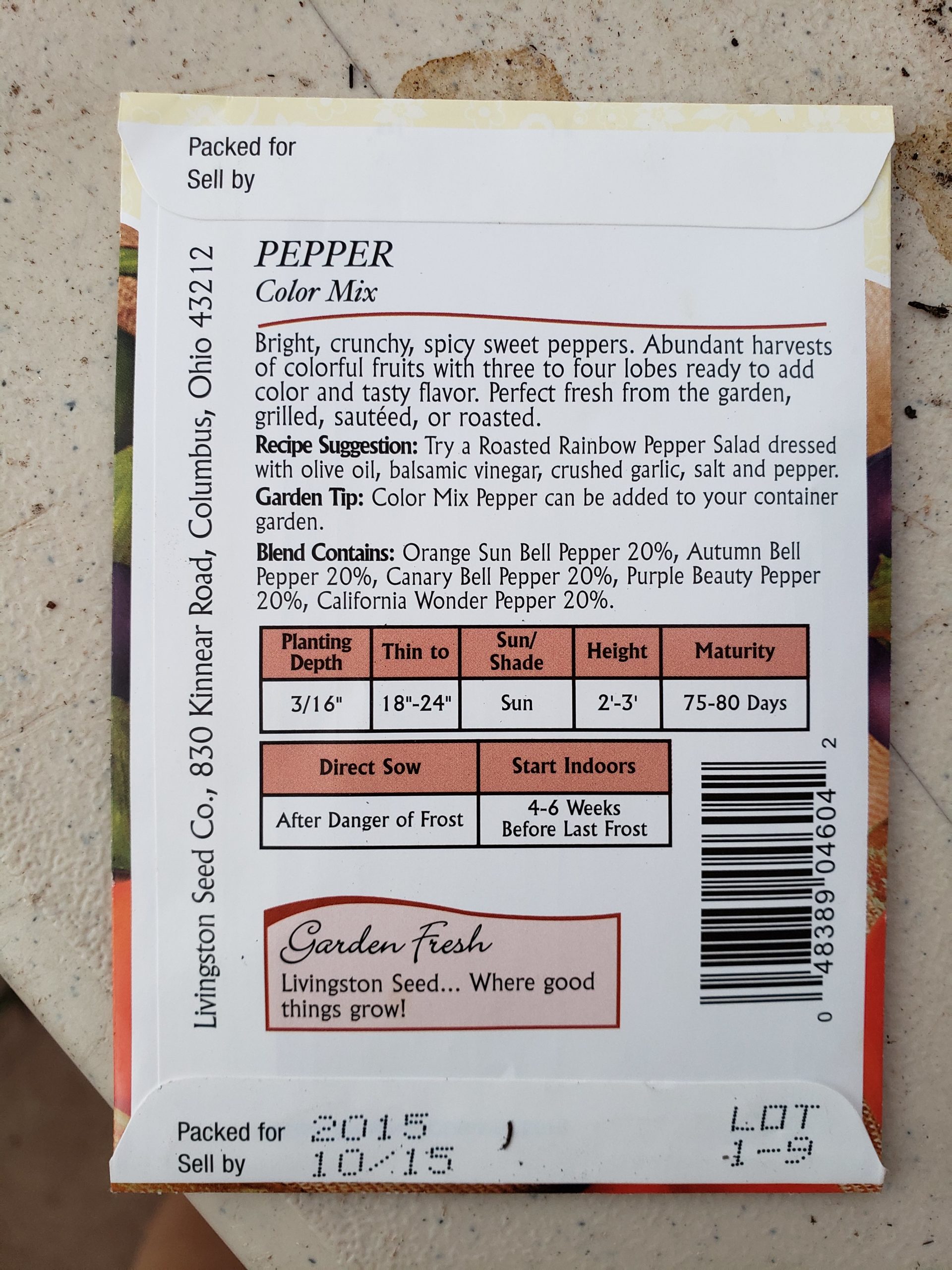The month of May is full of promise! Now is the time to choose what warm-weather veggies you would like to grow if you haven’t already. For me, I have been planning this moment for months! So, if you are ready to plant, here are a few tips and things you need to know and when reading a seed packet.
Plant Name: The name will be displayed prominently on the front and sometimes may include the Latin name of the variety of plant.
Cover Photo: This is important to look at because it shows you how the vegetable looks, how big the vegetables are, and the size of the plants. This can help you determine the way you place your plants.
Open-pollinated, heirloom, or hybrid: Confused by this? This just tells you the heritage of the plant and how long this type of plant has been around. Open-pollinated means seeds that have been stabilized over time (years or decades) and “breed true”. Heirlooms, while hotly debated, are just those open-pollinated seeds that have been around for decades longer. Some define it as those vegetable varieties that were planted before World War II. Hybrid are the newer types of varieties where the grower cross-pollinated two varieties to take the best features of each, such as disease and pest resistance, and drought tolerance.
Packed for and sell by date: This date tells you when the seeds were grown and packaged. Sometimes it states, “to be used for (insert year)”, but I take this with a grain of salt. Seeds can last years provided they are stored correctly, out of sunlight and are kept dry and cool. Nurseries and garden centers sometimes sell last year’s lot on sale and this is the best way to get seeds for cheap.
Annual or perennial?: Annual means you plant the seed, it grows, and dies in the same year. Some examples are tomatoes, peppers, corn, melons and squash. Perennial means you plant the seed it grows, dies back, and comes back in the spring and year after year. Some examples are strawberries, asparagus, and artichokes, and all fruit trees.
Planting depth: When you plant the seed, it can range from just spreading on top of the soil to an inch. Generally, you can plant the seed down about the diameter size of the seed, but usually I don’t worry about it too much. It is easy to plant too deep, so err on the side of shallow, but be sure to keep the soil moist so it doesn’t dry out and stop germination.
Thin to: This tells you the final spacing between plants. It is good to plant a little more seed than you need just incase some don’t pop up, but over time the seedlings can compete for water and nutrients. Close spacing will also affect the performance of the vegetable and can result in stunted plants.
Height: The height of the mature plant can tell you if you might need to trellis it and where to plant it. It’s good to plant taller plant on the north side of a bed and the smaller ones on the south. This ensures the tall ones don’t shade out the smaller ones.
Sun or shade?: Some veggies like a lot of sun, while other can get by with a few hours. This will help you decide where you plant and how. For example, I use the shade of some taller plants to protect my shade-loving plants. I currently have a bed of sugar snap peas interplanted with lettuce and other years I’ve planted cilantro at the bottom of my tomato plants.
Days to germination: This indicates how soon you should expect the seeds to pop out of the soil.
Maturity: This indicates when the plant is fully grown and how soon you should expect to be eating your harvest.
Direct sow or start indoors: Both have pros and cons. With direct sowing, you don’t have to worry about the extra cost of seed starting materials. However, with starting indoors you can get an early start on your growing season. This is especially important for plants that take a long time to mature, such as peppers, eggplants, and tomatoes.
If seed packets have you confused, fear not! Now you have the knowledge you need to read them with confidence.

